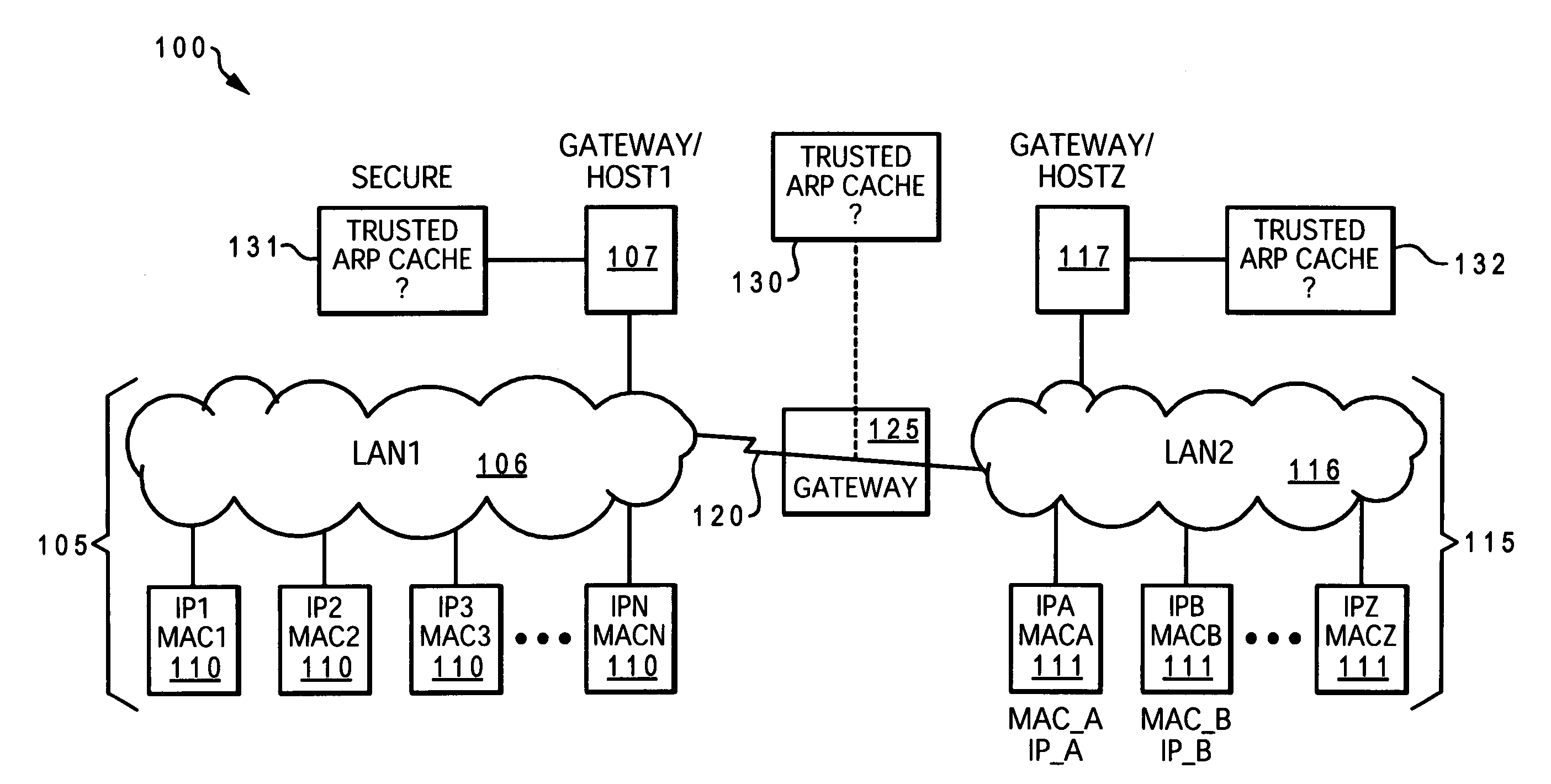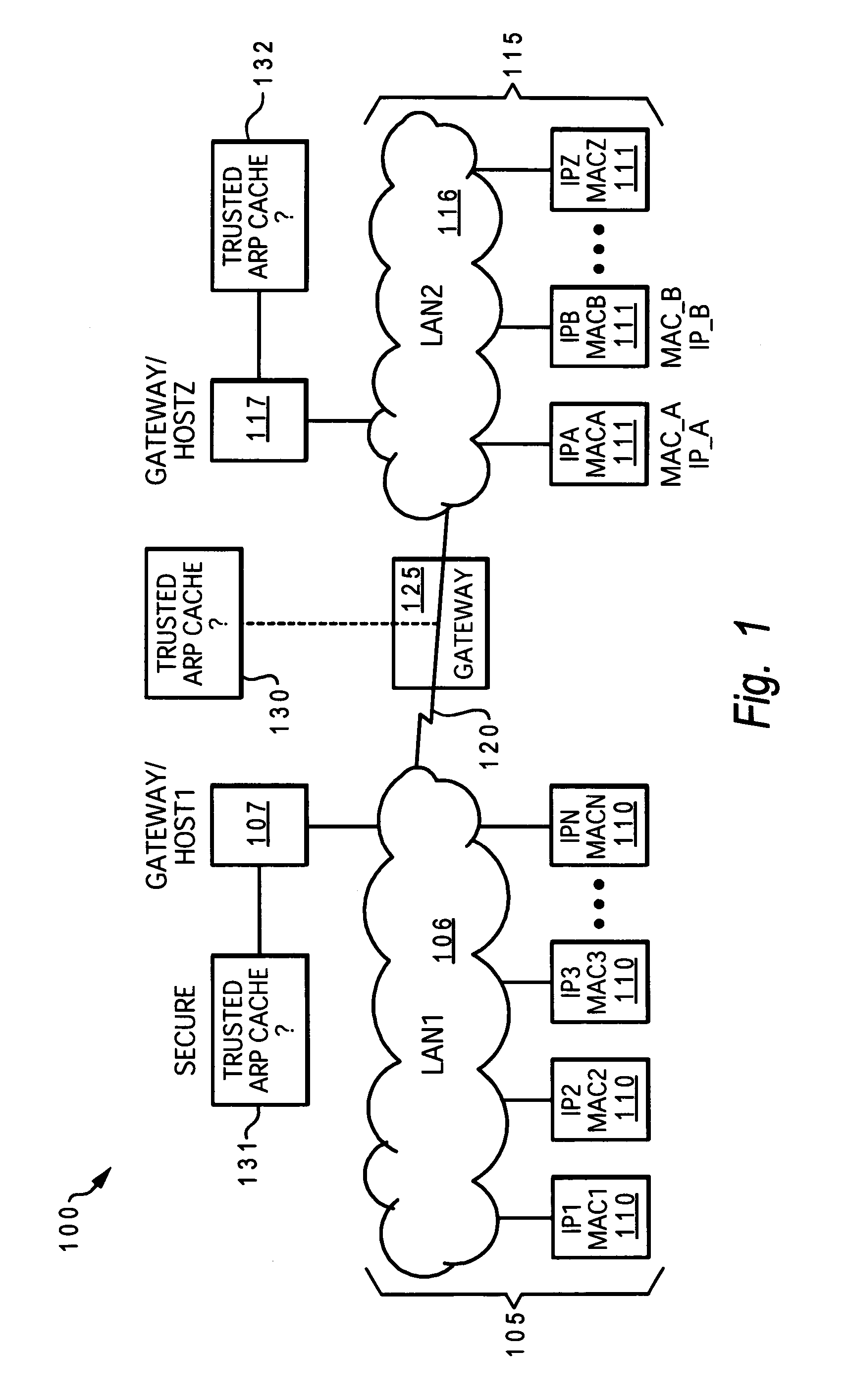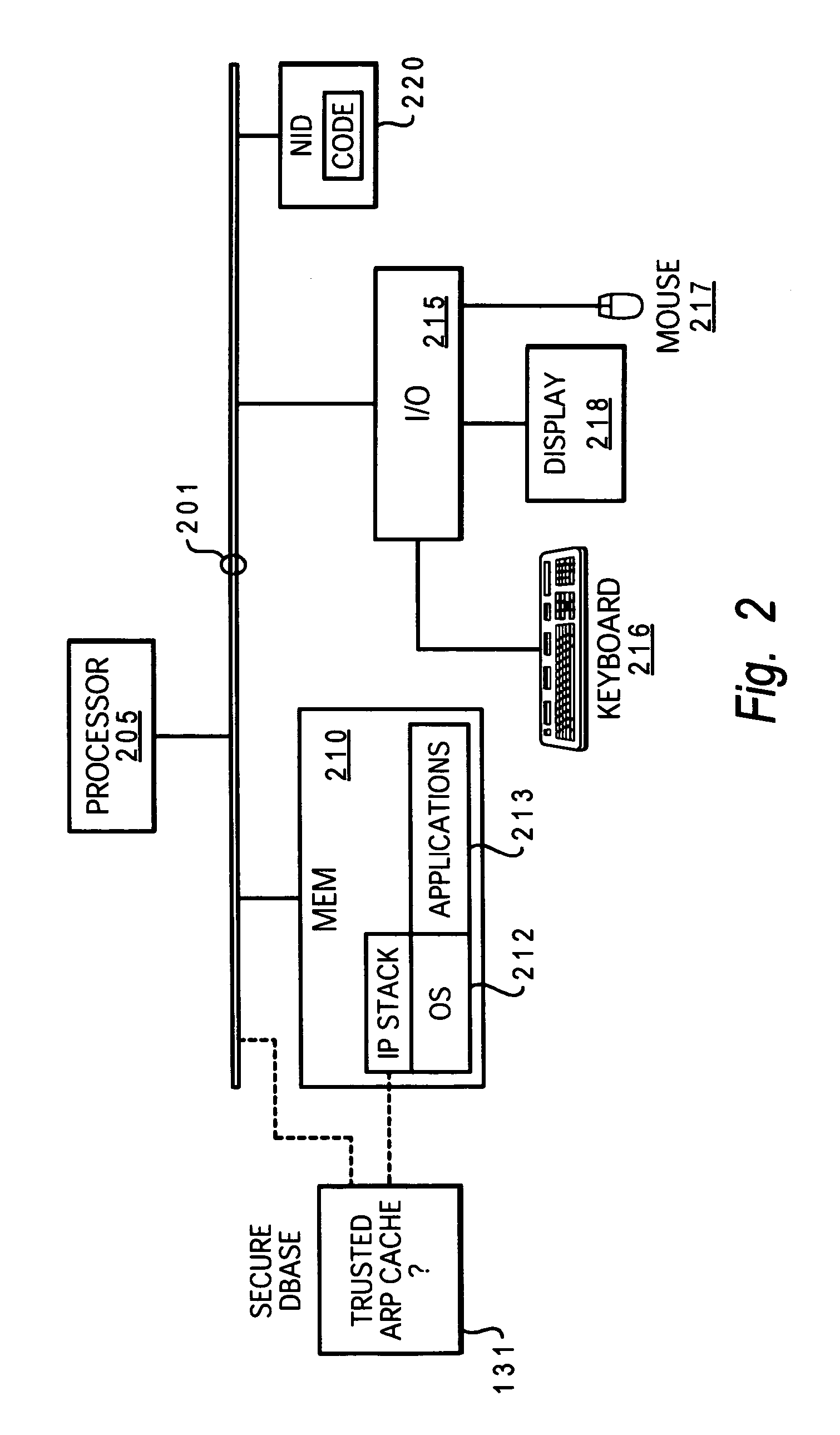Preventing asynchronous ARP cache poisoning of multiple hosts
a technology of asynchronous arp cache and asynchronous proxies, applied in the security field of local area networks, can solve the problem that the arp cache is not updated with the information, and achieve the effect of reducing the duplication of effort in maintenance and protection of the network
- Summary
- Abstract
- Description
- Claims
- Application Information
AI Technical Summary
Benefits of technology
Problems solved by technology
Method used
Image
Examples
Embodiment Construction
[0021]The present invention provides a method and system for preventing address resolution protocol (ARP) cache poisoning in a network system with multiple hosts. A trusted ARP cache is provided and utilized by a respective host representing one of multiple local area networks (LANs) that are connected via gateways to form an electronic network system. Whenever a new ARP response is detected in a first one of the LANs, a request for validation of the IP and MAC addresses therein is sent to at least a second host in a second LAN. The second host that receives the request initiates an authentication process for the ARP response (addresses). If the ARP response is authenticated, then the trusted ARP cache(s) of the multiple LANs are updated to reflect the new address information taken from the ARP response. However, if any one of a number of predefined conflicts regarding the addresses within the ARP response occur (e.g. an inconsistent pairing of MAC address and IP address, where a si...
PUM
 Login to View More
Login to View More Abstract
Description
Claims
Application Information
 Login to View More
Login to View More - R&D
- Intellectual Property
- Life Sciences
- Materials
- Tech Scout
- Unparalleled Data Quality
- Higher Quality Content
- 60% Fewer Hallucinations
Browse by: Latest US Patents, China's latest patents, Technical Efficacy Thesaurus, Application Domain, Technology Topic, Popular Technical Reports.
© 2025 PatSnap. All rights reserved.Legal|Privacy policy|Modern Slavery Act Transparency Statement|Sitemap|About US| Contact US: help@patsnap.com



